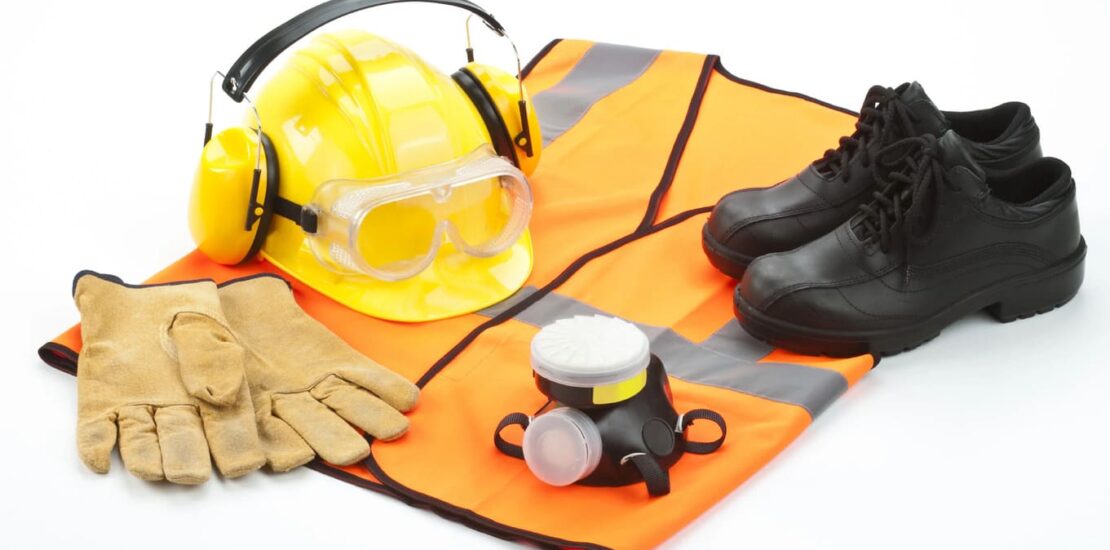How to Choose the Right Safety Equipment Suppliers?
- April 22, 2025
- Posted by:
- Category: Articles

Choosing reliable safety equipment suppliers remains a critical aspect of workplace safety planning, especially since personal safety equipment is not optional for businesses, organizations, and factories but it’s mandatory by law. The effectiveness of protective tools depends not only on its design but also on the expertise and reliability of the source. The global personal protective equipment (PPE) market is projected to grow to USD 104.3 billion by 2027, further increasing to USD 110.4 billion in 2028 (Market.us, 2025). Below are essential factors to consider when identifying suppliers capable of meeting evolving safety demands.
Selecting the Right Safety Equipment Supplier
Suppliers with experience in a specific industry are better equipped to address its challenges. For example, a supplier familiar with laboratory safety protocols will recommend appropriate PPE rather than suggesting irrelevant items. We’re about to go through the key things you should be looking for when selecting the best safety equipment suppliers.
Balancing Reliability and Cost
- Suppliers must maintain consistent stock levels and offer timely deliveries to prevent disruptions.
- Consider the reviews from previous clients, as they can reveal patterns of delayed shipments or inventory shortages—red flags that warrant caution.
- Cost matters, but the cheapest options may compromise quality. Focus on value: Durable, certified equipment that meets safety standards often proves more cost-effective long term than replacing subpar gear.
Certifications and Product Quality
- Reputable suppliers will readily provide documentation for items meeting standards, such as ANSI or OSHA markings.
- Suppliers with ISO 9001 certification demonstrate adherence to rigorous quality management practices.
- Prioritize companies that invest in testing and stay updated on evolving safety regulations.
Industry Expertise
- A knowledgeable supplier will advise on emerging safety technologies, regulatory changes, and optimal equipment choices. For example, understanding the nuances between respirator types or the latest impact-resistant materials can significantly enhance workplace protection.
- Seek suppliers who actively engage in industry discussions and prioritize continuous education.
Communication and Additional Services
- Suppliers who offer multiple contact methods (such as phone, email, and WhatsApp chats) are better because they facilitate communication.
- An added advantage is if the supplier offers services such as on-site training, maintenance programs, or installation assistance.
Why Do We Need PPE?
Personal Protective Equipment (PPE) acts as a first line defense against occupational hazards, shielding workers from injuries caused by debris, chemicals, or heavy machinery. However, its effectiveness hinges on proper selection, quality, and usage. According to OSHA, 12–14% of workplace injuries resulting in total disability occur due to improper PPE use—underscoring the life-or-death stakes of selecting reliable suppliers. And here’s the answer for the earlier question:
- Minimizes harm when incidents occur.
- Meets OSHA and other workplace safety laws.
- Critical in high-risk industries like construction and manufacturing.
- Fewer injuries mean fewer insurance claims and workers’ comp payouts.
- Fewer accidents = less lost productivity.
- Investing in quality Personal Protective Equipment (PPE) is cheaper than handling workplace injuries.
Enhancing Personal Protective Equipment (PPE) Compliance with AvidGuard
Tools like AvidGuard complement traditional PPE by monitoring compliance through AI-driven video analytics. AvidGuard system detects missing equipment and identifies hazards such as unauthorized access or fire risks. By alerting supervisors in real time, AvidGuard promotes accountability while reinforcing safety protocols.
How AvidGuard revolutionizes PPE detection and workplace safety?
Proactive Fire and Smoke Detection
AvidGuard‘s advanced video analytics system provides early detection of fire and smoke incidents by monitoring for visual indicators.
Automated Face Mask Compliance
The system incorporates facial recognition technology to verify proper mask usage at facility entry points.
Comprehensive PPE Monitoring
AvidGuard extends beyond mask detection to analyze complete PPE Safety Equipment compliance, including hard hats, safety goggles, gloves, and high-visibility garments.
Intelligent Anomaly Recognition
AvidGuard establishes baseline patterns of normal activity within work environments and identifies deviations that may indicate safety risks.
Suspicious Object Identification
AvidGuard‘s visual monitoring detects foreign or misplaced items in work areas, addressing both security concerns and potential trip/fall hazards.
Note: You can visit AvidGuard to know more about other features.
The Bottom Line
Choosing the right safety equipment suppliers is crucial for any business serious about protecting its workforce. It’s about partnering with providers who understand businesses’ unique needs and can deliver reliable solutions.
When evaluating suppliers, look beyond the price tag and cost. Consider the safety equipment suppliers’ track record, the quality of their products, and their ability to provide expert advice. The best safety equipment suppliers don’t just sell you gear; they become partners in your safety strategy.
3 Comments
Comments are closed.

[…] Also you can learn more about: Safety Equipment Suppliers […]
[…] you’re looking for Safety Equipment Suppliers, you want to make sure you’re getting the quality equipment. Your workers’ safety is on […]
[…] Also you can learn more about: Safety Equipment Suppliers […]